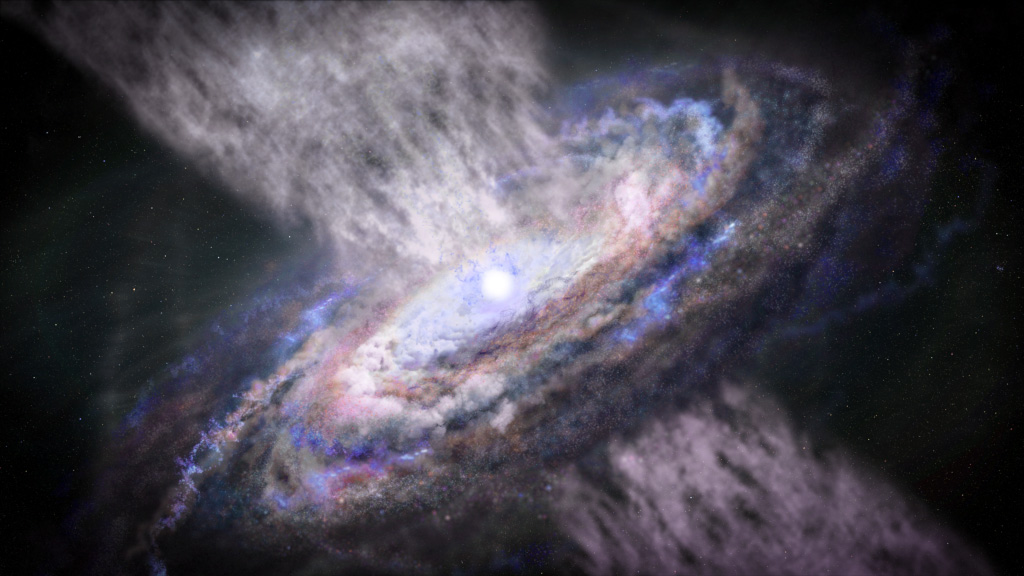
Artist rendering of gas being blown out of a galaxy by radiation from an active supermassive black hole. Image courtesy of: STScI)
New evidence which hints that monster black holes may have destroyed star formation in their galaxies has been unveiled in a recent study which looks backwards 12.5 billion years into our early universe.
All stars are born from molecular clouds of gas whose particles collide and create heat energy to form multiple protostars. This process of star formation continues across galaxies in the universe, but some appear to have ended their star formation billions of years ago.
Astronomers suspect feedback from powerful radiation emitted by material swirling around a black hole at the center of a galaxy, can heat molecular gas in that galaxy and prevent it from collapsing to form stars. It may even have blown that gas out of a galaxy entirely. These galaxies are considered "red and dead," as once star formation shuts down, the only stars that remain are cooled red stars which further cool down over long periods of time.
While there is evidence that may prove black holes can suppress star formation, astronomers are still attempting to determine conclusive observations of this process occurring and hope to understand the process.
Recently, a research team led by Kei Ito of the Graduate University for Advanced Studies in Japan, searched the Cosmic Evolution Survey (COSMOS) archives for distant galaxies to test this hypothesis. He hopes to prove that active black holes and red-and-dead galaxies are connected. COSMOS utilizes some of the largest and most powerful telescopes globally, such as the Subaru Telescope in Hawaii, the Hubble Space Telescope and even the European Space Agency's XMM-Newton X-ray telescope.
The COSMOS team examined galaxies ranging 9.5 billion to 12.5 billion years ago looking for X-ray and radio signals from active black holes. Those signals are often weak, requiring a "stack" of the X-ray and radio images to improve the signal-to-noise ratio which are then averaged to combine the data. It was found that the red-and-dead galaxies had stronger black hole activity than the galaxies that were still forming stars during the same time periods.
The study findings, published in The Astrophysical Journal, may not directly prove that black hole feedback is quenching star formation but they do lend strength to the hypothesis of a connection between active black holes and red-and-dead galaxies.
With the James Webb Telescope providing more data from deep in the galaxy, scientists will have many more opportunities to discover key info regarding black holes and galaxies being swallowed.
Shoutout to black holes for being absolutely terrifying!